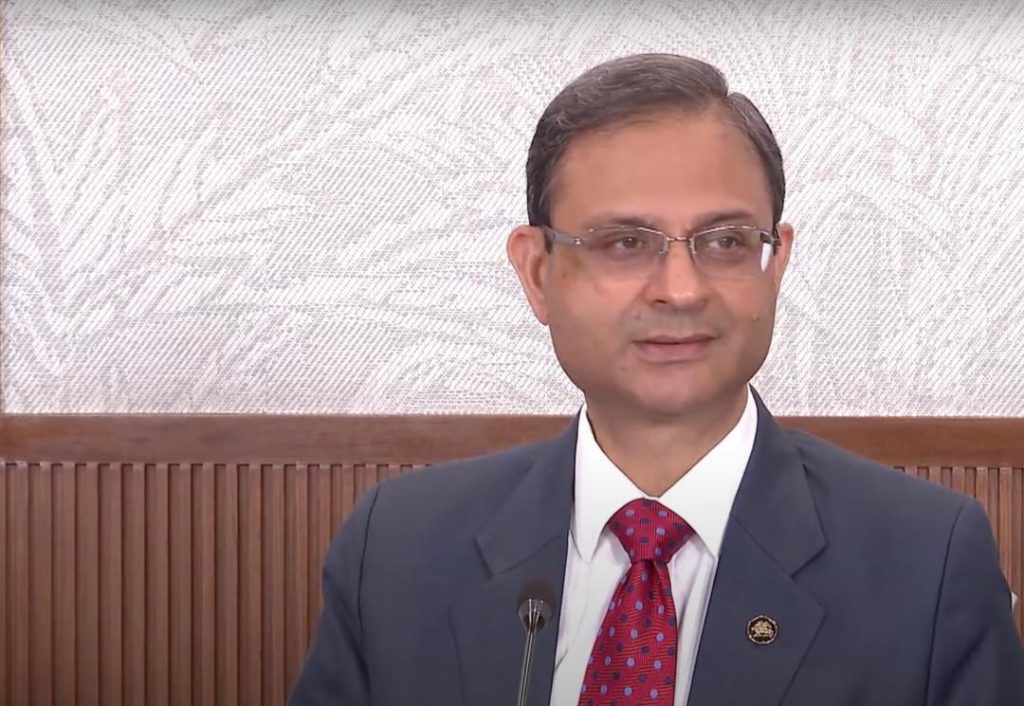
I am Sanjay, but I am not Sanjay of Mahabharat: RBI Governor on repo rate
In a surprising and humorous response, RBI Governor Sanjay Malhotra recently addressed the uncertainty surrounding the repo rates amidst the ongoing trade tensions triggered by US President Donald Trump’s tariffs. When questioned about the direction of the repo rates, the Governor quipped, “We don’t know…I am Sanjay, but I’m not Sanjay of Mahabharat.” His statement has left many wondering about the significance of this reference and what it implies for the Indian economy.
For the uninitiated, Sanjay is a character from the ancient Hindu epic, Mahabharat, who serves as the advisor to the blind king Dhritarashtra. Sanjay is often depicted as a wise and perceptive individual, possessing the ability to see and predict the future. This unique gift allows him to provide valuable counsel to King Dhritarashtra, helping him navigate the complexities of politics and war.
Against this backdrop, RBI Governor Sanjay Malhotra’s statement takes on a deeper meaning. By referencing the character of Sanjay from Mahabharat, the Governor is implying that he does not possess the same level of foresight or divine vision as the legendary Sanjay. This admission is significant, as it underscores the inherent uncertainty that surrounds the repo rate decisions.
In the current economic landscape, the repo rate is a critical factor in determining the direction of interest rates, inflation, and overall economic growth. The Reserve Bank of India (RBI) uses the repo rate as a tool to regulate the money supply and stabilize the economy. However, with the uncertainty surrounding the US-China trade war and its potential impact on the global economy, the RBI is faced with a challenging task of predicting the future trajectory of the repo rates.
RBI Governor Sanjay Malhotra’s statement suggests that, despite the best efforts of the RBI’s economists and policymakers, the uncertainty surrounding the repo rates is too great to be accurately predicted. This uncertainty is compounded by the fact that the US-China trade war is a complex and rapidly evolving situation, with far-reaching implications for the global economy.
So, what does this mean for the Indian economy? In the short term, the uncertainty surrounding the repo rates may lead to increased volatility in the financial markets, making it challenging for businesses and individuals to make informed investment decisions. However, in the longer term, the RBI’s commitment to maintaining price stability and promoting economic growth may lead to a more nuanced and data-driven approach to setting the repo rates.
In a recent interview, RBI Governor Sanjay Malhotra emphasized the need for a data-driven approach to monetary policy, stating, “We will continue to monitor the evolving economic situation and adjust our policies accordingly.” This commitment to data-driven decision-making is reassuring, as it suggests that the RBI is well-equipped to navigate the uncertainties of the global economy.
In conclusion, RBI Governor Sanjay Malhotra’s statement has provided a valuable insight into the RBI’s approach to setting the repo rates. By referencing the character of Sanjay from Mahabharat, the Governor has acknowledged the inherent uncertainty surrounding the repo rates and the limitations of forecasting the future. As the Indian economy continues to evolve and adapt to the changing global landscape, it is reassuring to know that the RBI is committed to maintaining price stability and promoting economic growth through a data-driven approach.






